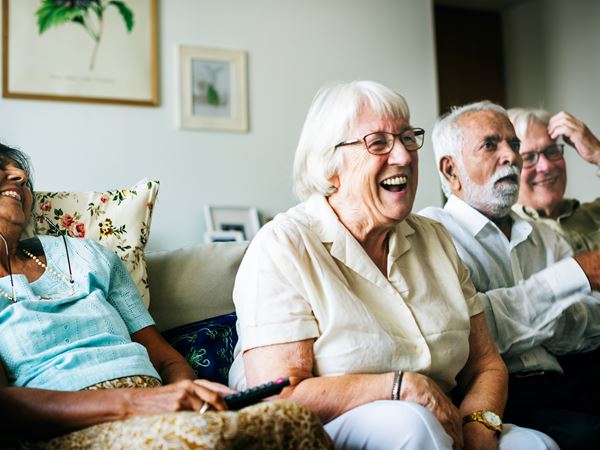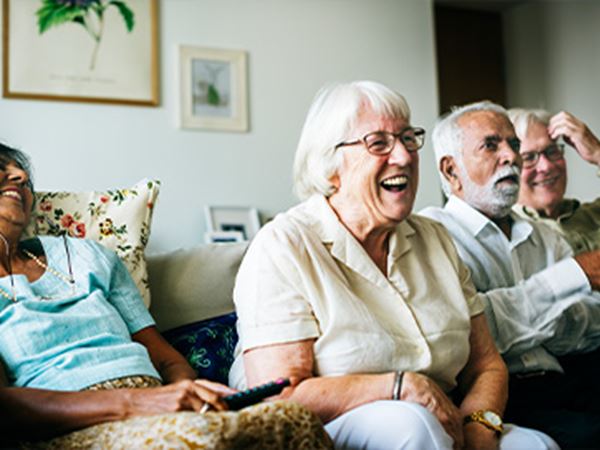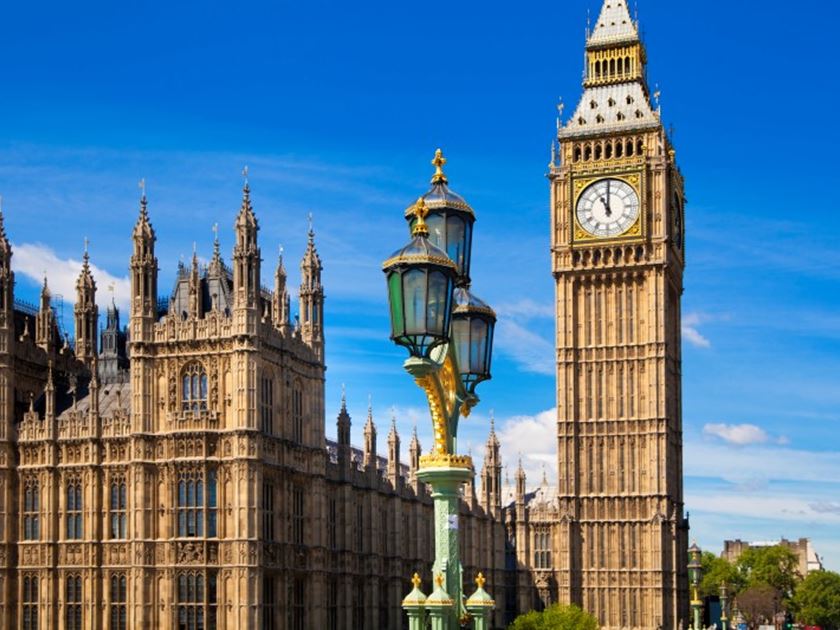Housing associations providing supported housing and sheltered accommodation during the coronavirus outbreak continue to face unique and difficult challenges in a changing environment. Many are at the frontline providing care and support to very vulnerable people, including people who have tested positive for coronavirus, and implementing measures to safeguard and support residents and service users through the crisis.
We know that supported housing providers are working hard to plan how to keep vital services running. To support this work, we have summarised the latest information available on coronavirus that is relevant to supported housing.
We are in regular contact with ministers and officials to make sure that the issues faced by supported housing providers are heard. To support this work, please contact us to share the challenges you are experiencing and examples of the vital work you are doing, so we can ensure these are understood across the government.
On this page you will find information on:
- Latest available guidance.
- Vaccines and testing.
- Shared accommodation and communal areas.
- Shielding.
- Maintaining service delivery.
- Contract tracing.
- Prevention and infection control in supported housing settings.
- Managing hospital discharge to supported housing schemes.
- Guidance on designated settings for people discharged to care homes.
Latest available guidance
Supported housing landlords and providers should review their services and operating practices regularly in line with available guidance. In particular:
Additional guidance is listed at the bottom of this page.
Vaccines and testing
New operational guidance on testing and vaccinations, now includes frontline social care workers directly working with vulnerable people who need care and support in any setting including supported housing. The Standard Operating Procedure published on 14 January clarifies which roles this applies to and includes material for communicating eligibility for the vaccine to staff.
We are working with the government to ensure efficient and flexible delivery of a range of asymptomatic staff testing options as part of a wider strategy of infection control and maintaining frontline service delivery, and that housing associations are supported to deliver this themselves where appropriate.
Read more about vaccines and testing on our dedicated webpage.
Shared accommodation and communal areas
Shielding
People who are clinically vulnerable to coronavirus are now being advised that they no longer need to shield. Further information is available in the government’s shielding guidelines, which were updated on 1 April 2021. This guidance also inlcudes information about priority for vaccinations, accessing care and support and new risk-assessed groups. We are reporting the implications of staff shielding to MHCLG.
Maintaining service delivery
In cases where residents need immediate care or support that cannot be delivered remotely without putting them at risk, providers should try to maintain service delivery as consistently as possible. This can include:
- Working with local authorities to ensure that lists of people in supported living are up to date.
- Maintaining up-to-date business continuity plans.
- Maintaining oversight of vulnerable residents and ensuring they have risk management plans in place.
- Avoiding sharing staff between settings.
Please get in touch if you are experiencing issues with staffing that are affecting business continuity. We will report this to government.
Contact tracing
- Contact tracers should follow up with people who are ‘close contacts’ of someone who has tested positive for coronavirus. This could be someone who:
- Spends significant time in the same household
- Is a sexual partner.
- Has been within one metre of someone who has tested positive for coronavirus for one minute, has been coughed on or had skin-to-skin contact.
- Has been within two metres of someone who has tested positive for coronavirus for more than 15 minutes.
- Has travelled in a vehicle with someone who has tested positive for coronavirus.
- The government Test and Trace app is now available to download. Advice for health and social care workers on using the app is also available.
- NHF members report that working with local public health teams has been very successful in managing staffing issues arising from Test and Trace self-isolation requirements.
Prevention and infection control in supported housing settings
While maintaining service delivery, providers should also take all necessary precautions to reduce the risk of coronavirus spreading within schemes. The risks may be higher with new and emerging variants that are more transmissible and there is a need to monitor the effectiveness of the vaccine on these new variants. We held a webinar on coronavirus testing, winter planning and infection control in supported housing settings on 30 November 2020.
The government guidance covers infection control measures including:
- Proper use of PPE.
- Hygiene measures including hand-hygiene.
- Promoting social distancing among staff and residents.
- When and how to allow visitors to schemes.
- How to respond if staff or residents display coronavirus symptoms.
- Managing outbreaks within schemes.
- Testing and tracing.
Free provision of PPE to health and social care staff will continue until at least June 2021, and a stockpile equivalent to approximately 120 days’ usage at coronavirus levels in the UK will cushion fluctuations in demand.
Reducing the risk of infection
- Undertake continuous risk assessments of each setting, including:
- The vulnerability of residents.
- Those who may find changes in routine challenging.
- The levels of support and care available.
- The physical conditions in the operating environment.
- Ensure that lists of people in supported living are up to date.
- Communicate information with residents/service users in a way that they are most likely to understand.
- Continue to adapt services and practices and adopt social distancing measures wherever possible.
- Use hand and respiratory hygiene principles and self-isolation where necessary and carry out periodic hygiene audits. Using correct cleaning equipment that kills viruses.
- Continue to use PPE where necessary, including providing personal care, or in situations where social distancing is difficult, for example, if the supported person has behaviours and/or needs.
- Regularly update staff on how to use PPE (especially donning and doffing and correct disposal/waste management).
- Minimise and carefully manage visits where feasible.
- Where possible, avoid or minimise staff equipment, including cleaning equipment, deployment to more than one location. If a local risk assessment identifies service delivery issues caused by low staffing, supported living and care/support providers can work with local authorities to establish plans for mutual aid, including limited sharing of the workforce.
What to do:
- In case of possible outbreak?
Supported housing providers and local authorities should work together to facilitate mutual aid, care and support plans across their areas.
- In case of suspected or identified cases of infection?
Supported housing providers and staff should comply with the published guidance on testing and tracing in workplaces.
- If there's a risk of multiple cases of coronavirus?
In such situations, providers should work with the contract tracing team to seek tailored advice if possible from the outbreak control team, the local authority or Public Health England, to help manage the outbreak. This also applies if there is risk of an outbreak across a whole team providing an essential service.
- If an outbreak is suspected in supported living accommodation?
Report to the local Health Protection Team (HPT) immediately.
Please see our detailed page for updates on accessing coronavirus testing.
Visits
Every care home resident can now nominate someone who can visit regularly. At Step 2 of the roadmap (no earlier than April 12), the government will look at the effectiveness of the vaccine for care home residents, as well as levels of infection locally, especially of new variants. The government will take a decision at that point on extending the number of visitors to two per resident and set out a plan for the next phase of visits for people in residential care. More detail on these changes will be published in updated guidance to support care homes to facilitate visits.
Additional testing will also be provided to facilitate safer visits for residents in high risk supported living and extra care settings. The Department of Health and Social Care and Public Health England have now published updated supported living guidance including updated information on in-person visiting that states:
- People living in supported living settings live in their own homes and should be treated as such. This means they, and their visitors, need to follow the same national restrictions as other members of the public.
- Supported living managers should seek to support and facilitate these opportunities wherever it is safe to do and work with the people being supported to identify what steps they can take mitigate risks.
- The default position is that visits should be supported and enabled wherever it is safe to do so.
The updated guidance states that: ‘this guidance on in-person visiting is intended for supported living settings but many of the principles are applicable to extra care housing for older people. It may also be a useful resource for the wider supported housing sector, such as retirement or sheltered housing.’
Public Health England also recommend asking all professional visitors health screening questions before allowing entry.
Managing hospital discharge to supported housing schemes
See guidance on supported living and guidance on stepdown of infection control.
- All people receiving hospital care will be tested for coronavirus, and hospitals should share care needs and coronavirus status with relevant community partners planning the subsequent community care.
- As set out in the coronavirus adult social care action plan, any individual moving into a supported living setting should be supported as if they were possibly coronavirus-positive until a 10-day period has passed, even where they have tested negative for coronavirus. This should increase to 14 days based on a risk assessment if the setting is considered high risk. Providers will need to follow the relevant guidance for use of PPE for coronavirus-positive people during this period. The possibility of false negatives or the patient having only just contracted the virus means that housing providers should still exercise extreme caution.
- Supported living environments should ensure that support plans are in place to maintain a supportive and planned transfer. If the PCR (swab) test has been performed in hospital but the result still awaited, the person may only be discharged if assurance has been gained that appropriate support plans are in place for the requirements of the isolation period to be met. Discuss support plans with the person being discharged, and where appropriate their family and care providers. Pay particular care to people with autism, learning disabilities, mental needs problems, or dementia and their families understand, before the transfer happens.
- Consider the needs of all residents in cases of people living in shared settings, in particular, the practical arrangements required to reduce the risk of infection.
- Some people living independently may need support to ensure they can follow advice about what should happen during the 14-day period. If the person, or anyone they share their home with, lacks capacity to understand information about the discharge arrangements or the requirements of the 14-day period, and decisions that impact on their living arrangements and/or support needs are required, then the Mental Capacity Act should be followed. Consult with the people who are significant to them before decisions are taken in their best interests.
Guidance on designated settings for people discharged to care homes
DHSC has published guidance on the designated settings scheme for people discharged into care homes with a positive coronavirus test. This includes updates to reflect information in the ‘clarification note’ on 14 to 90 day testing, and on the need for clinical assessments on discharge from the designated setting to a care home.
Additional guidance











